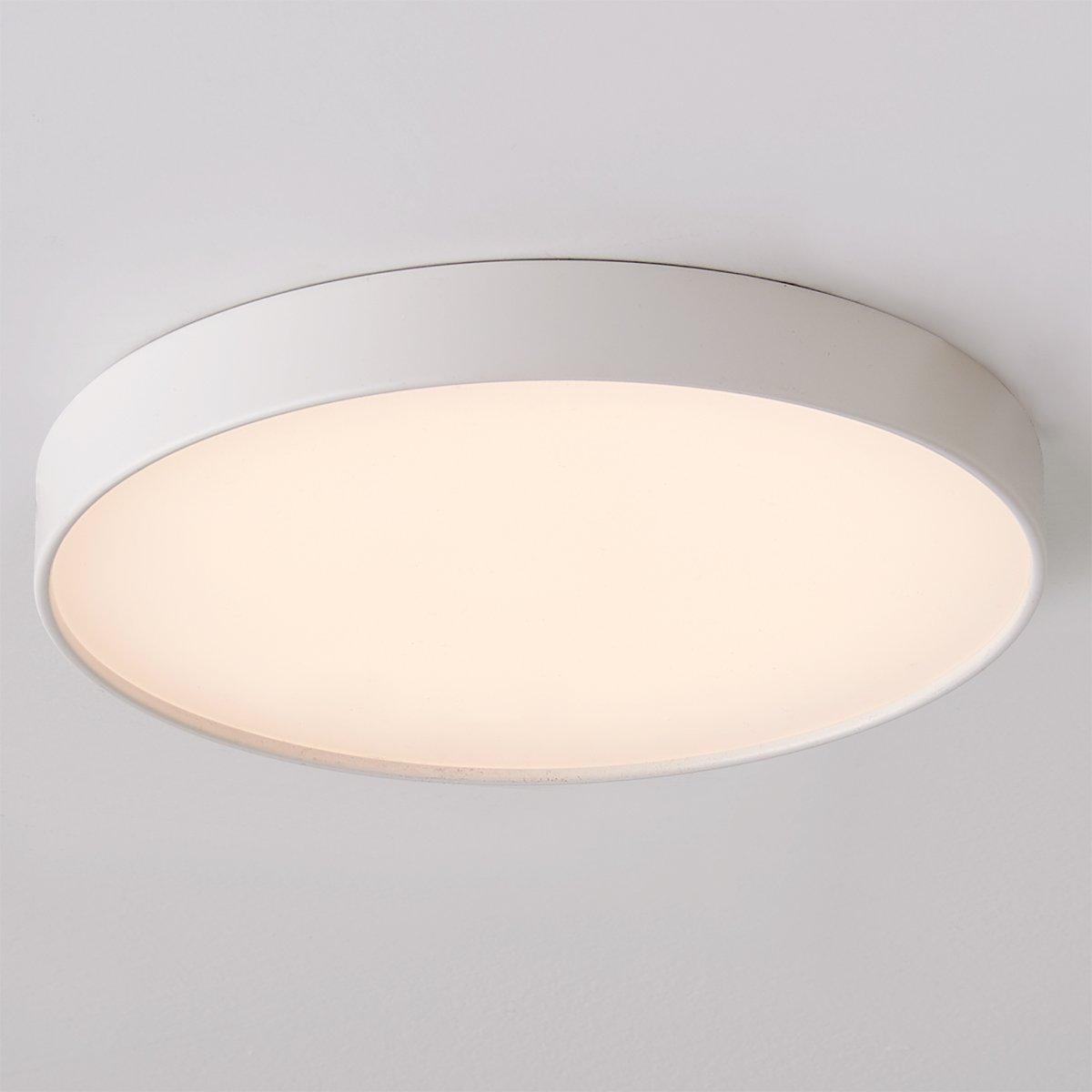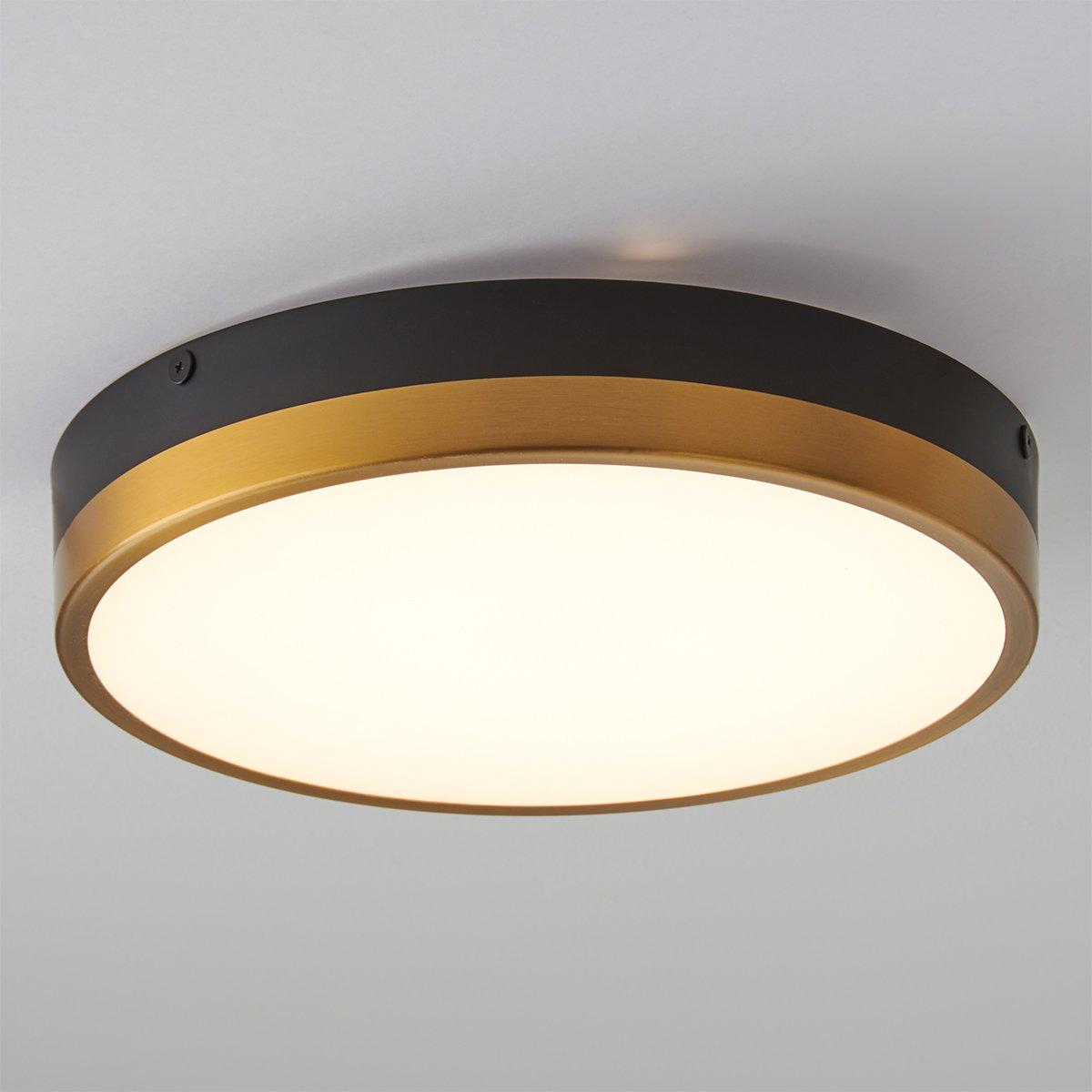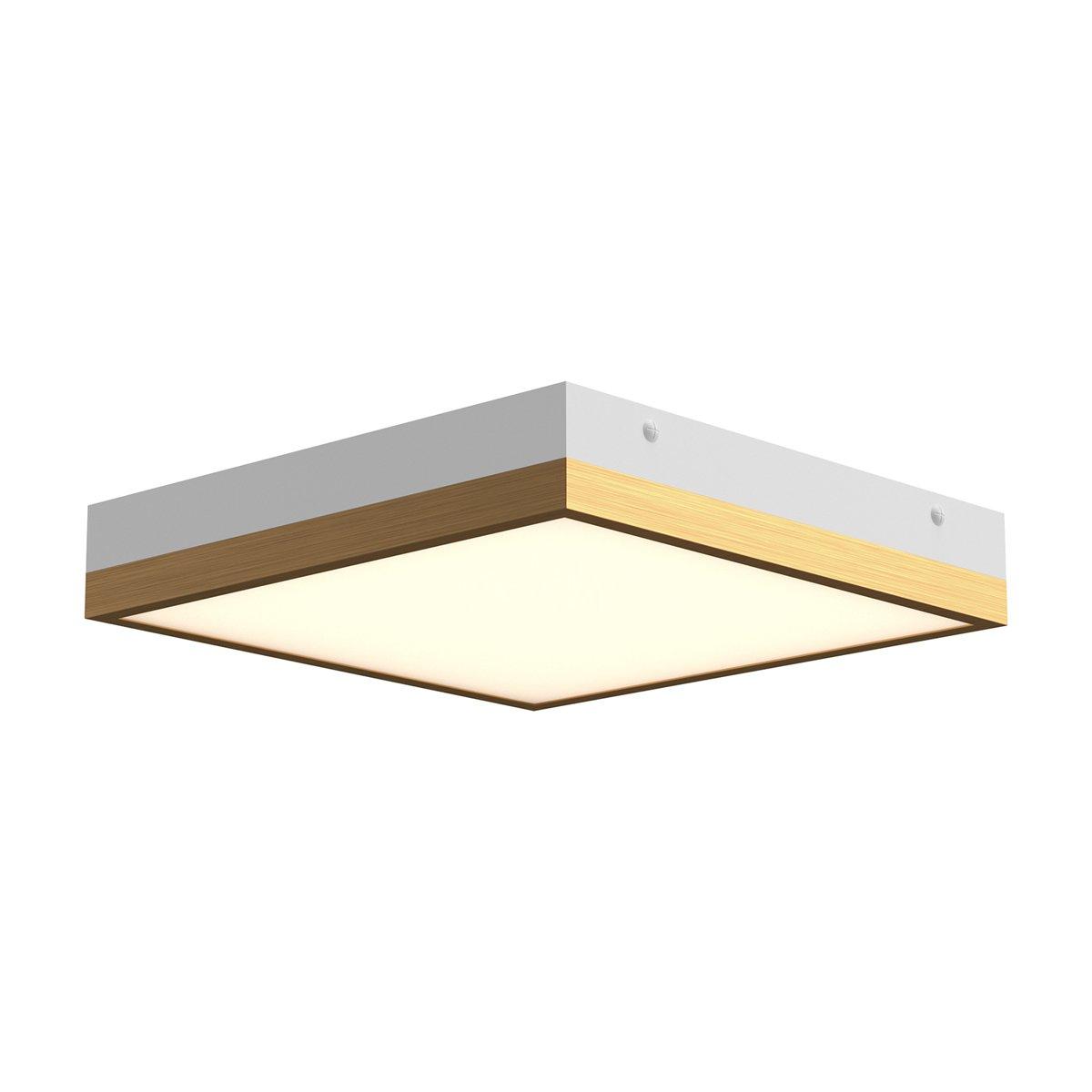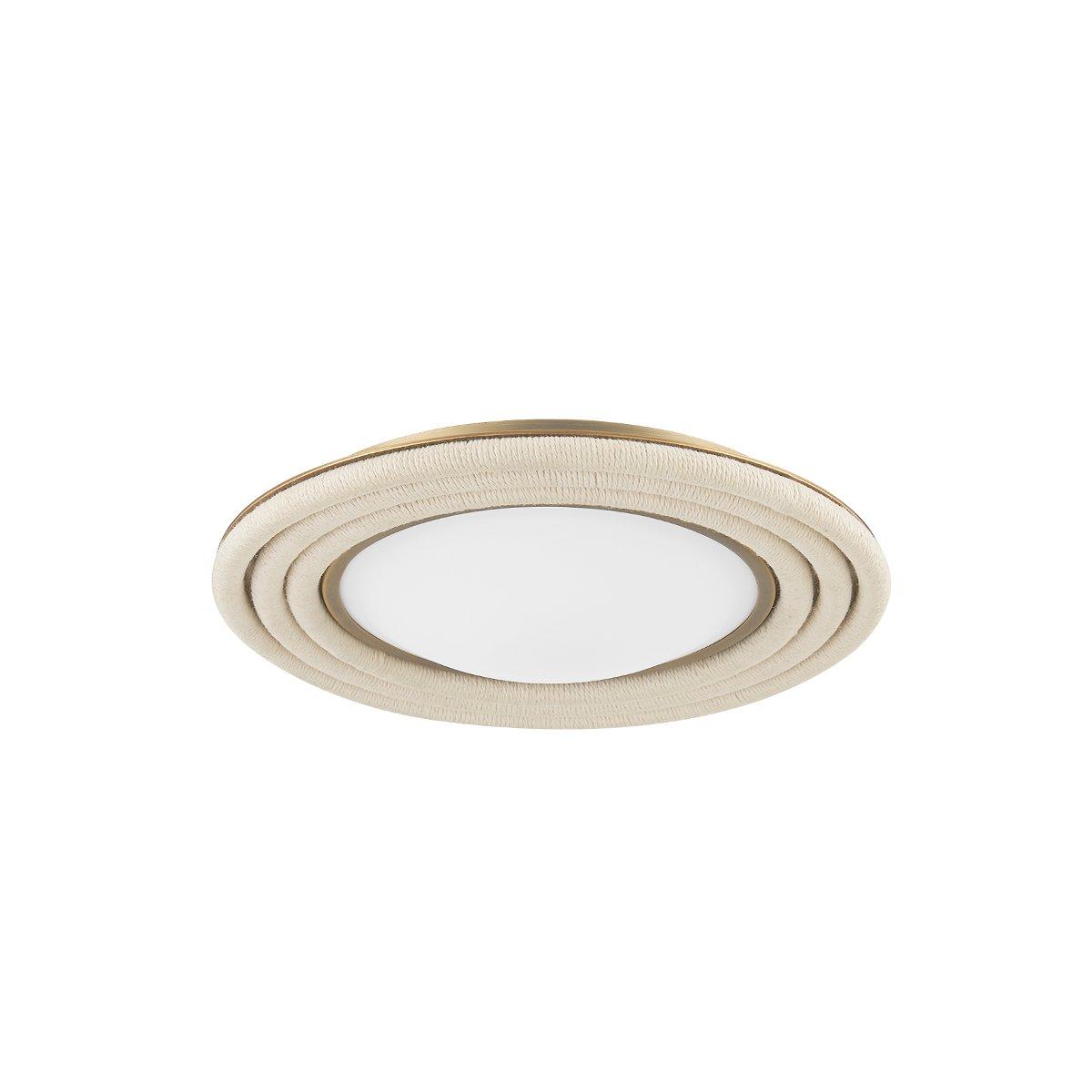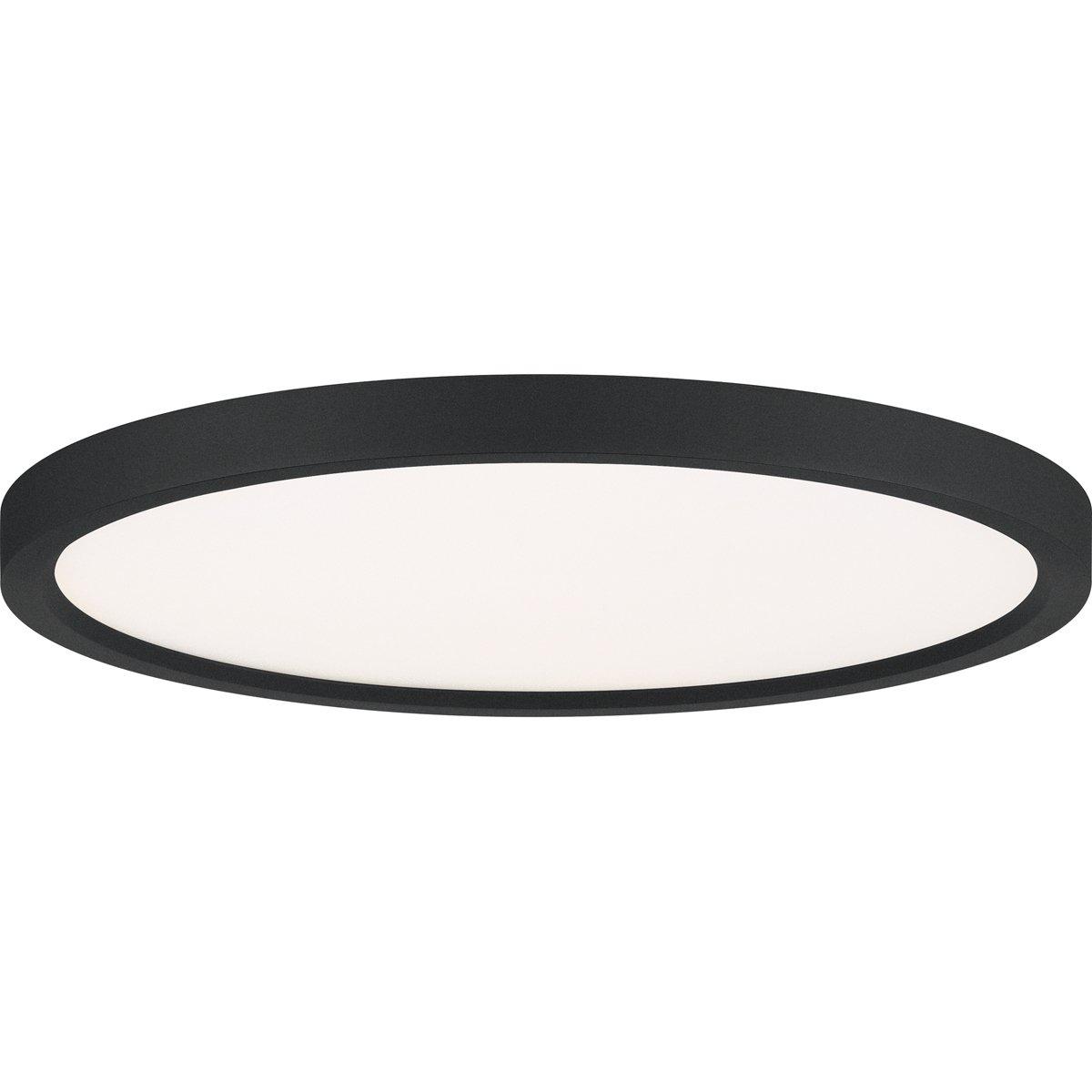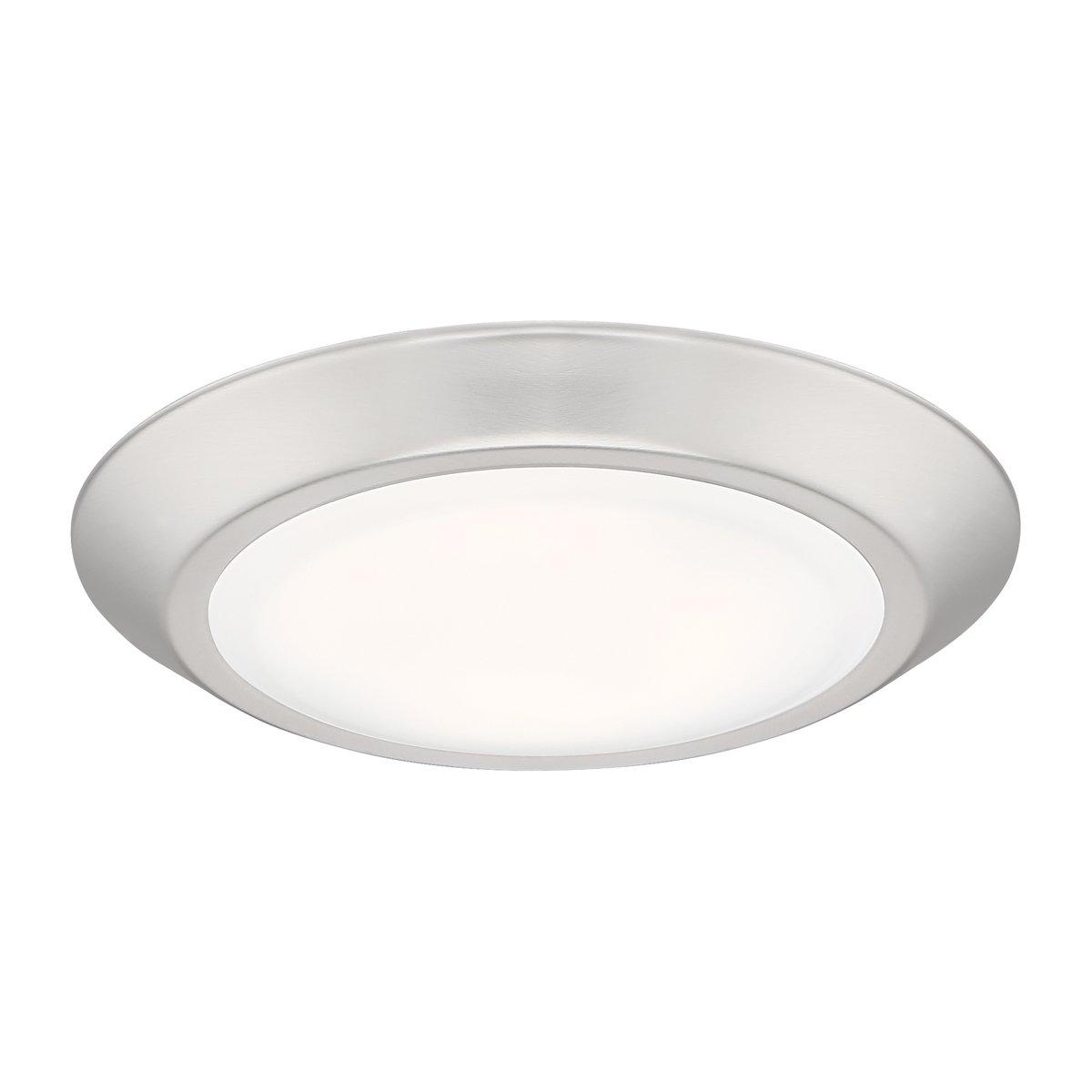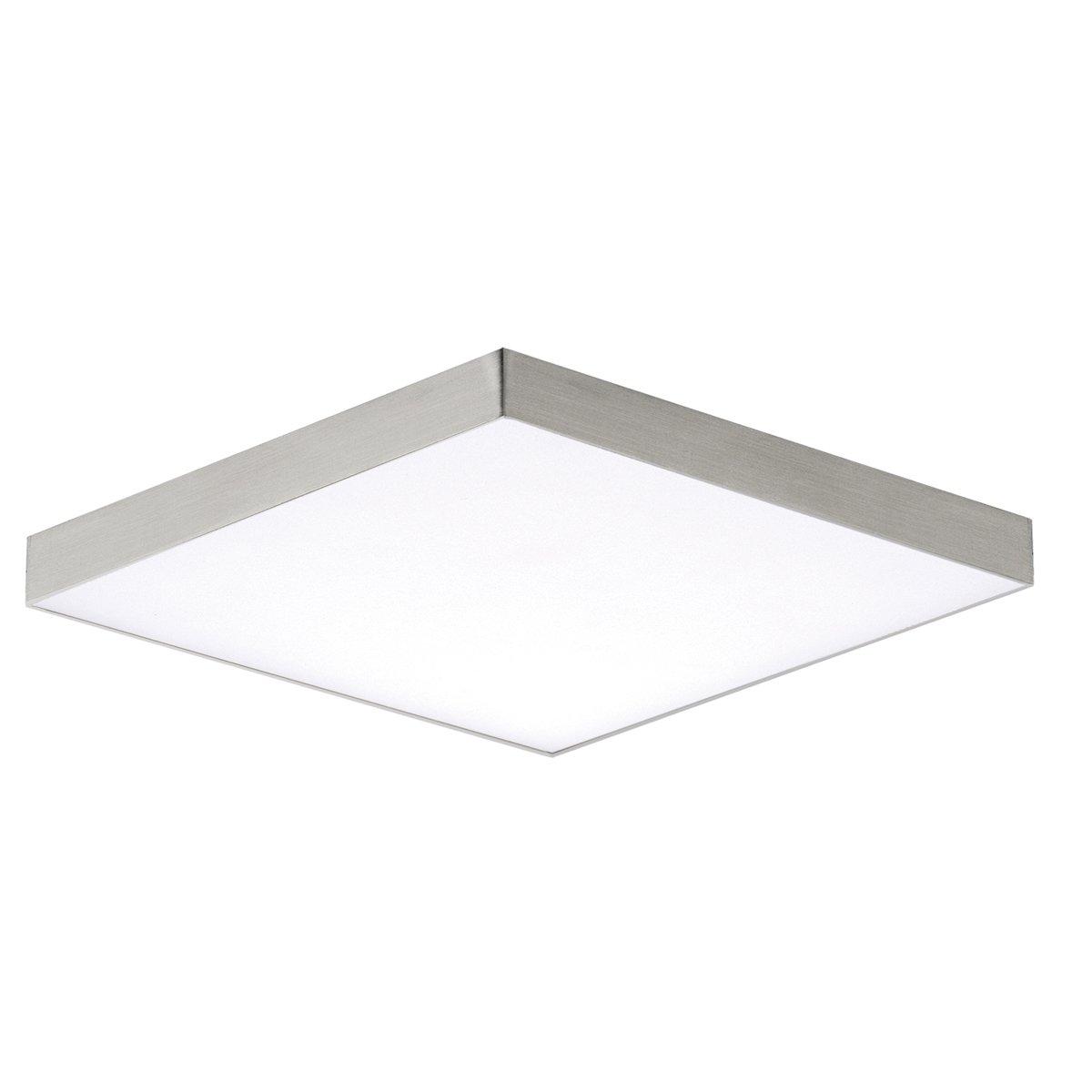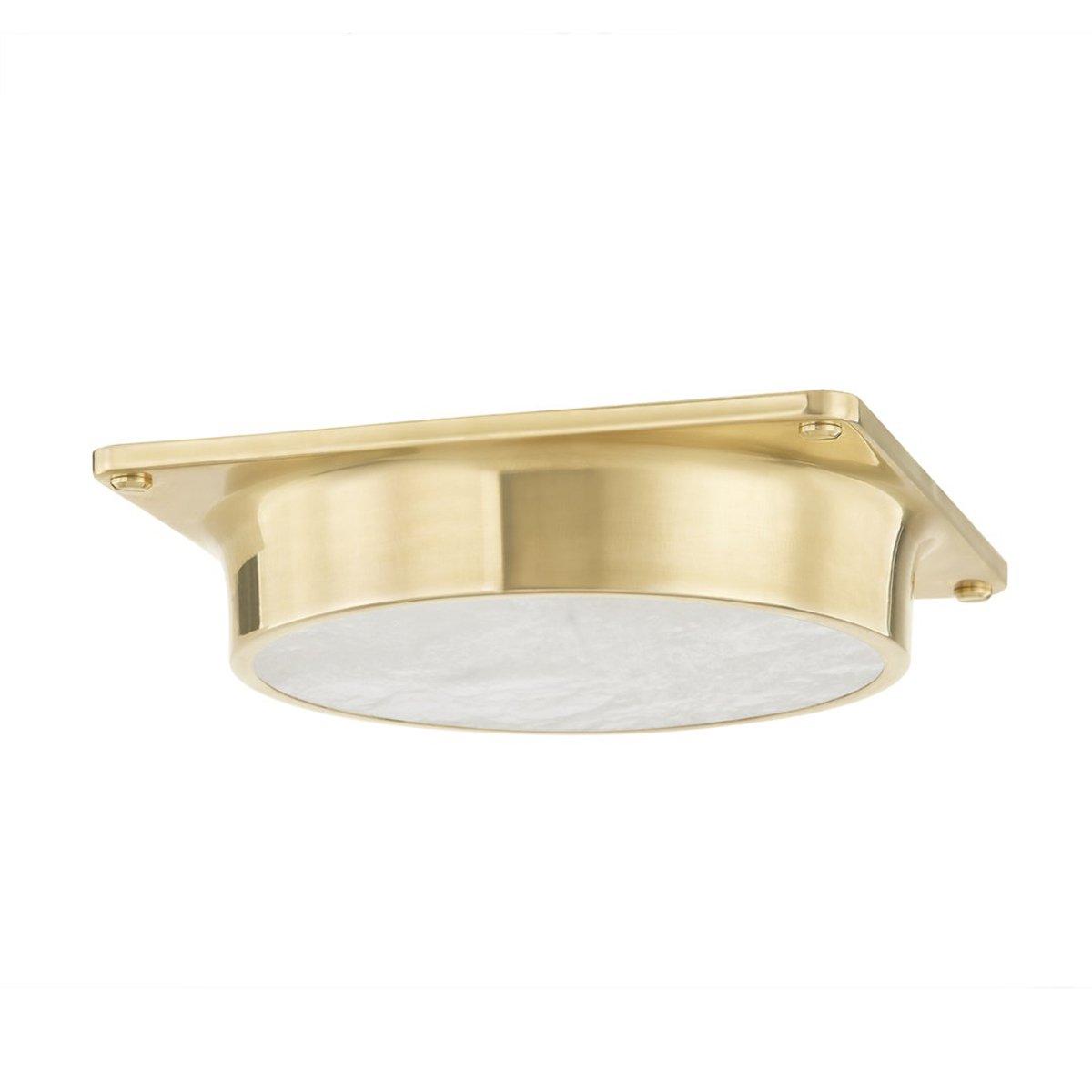Basement Stairway Lighting Ideas That Will Actually Make You Want To Go Down There
Got a basement stairway with limited lighting, low ceilings and tight spaces? We have some ideas that might help cure your basement lighting woes.
Over the years we have seen it all when it comes to basements.
Especially when it comes to older homes, most basements were never planned to actually be finished spaces. They were thought of as a place for storage and maybe laundry - not a spot to invest much time or money.
For that reason they can often feel like an afterthought or a disregarded part of the home, which makes for an unpleasant experience when trying to use it for everyday purposes or even finish it into extra living space.
Low headroom and tight staircases are common in many basements which can make it a hazardous trek down. It also adds complications when trying to add lighting as there often just isn’t much space available for a typical light fixture!
Affiliate Disclosure: As an Amazon Associate I earn from qualifying purchases. You should assume the owner of this website has an affiliate relationship and/or another material connection, to any suppliers of goods and services that may be discussed here and may be compensated for showing advertisements or recommending products or services, or linking to the supplier's website.
What Makes Basement Stairway Lighting Difficult?
Figuring out lighting for basement stairways can be tricky for quite a few reasons, and most often they are linked to the age of the home. In older homes, the original building code may not have required the same amount of space we need to have in new homes today, or the basement was never planned to be a finished space and wasn’t a priority when planning the home’s layout.
Limited or low headroom above the stairs and on landings is the most common problem we see when trying to find the best stairway lighting options going into a basement. These tight spaces can make finding a practical lighting option harder than other places in a home.
Benefits Of Adding Basement Stairway Lighting
Safety -
Basement stairways can easily become hazardous places in a home when they aren’t adequately lit. Adding lighting allows the visibility to be better and thus decrease the risk of tripping and falling.
Usability -
In many homes without basement stairway lighting, we find people say they don’t even want to go down into the space. The lack of light makes the space feel uncomfortable and unusable for the homeowners. Adding sufficient lighting in the basement stairway can make the trip into the basement more pleasant and increase the use of the space.
5 Basement Stairway Lighting Ideas For Low Ceilings
1. Lighting The Basement Stairway From Above The Door -
One smart way to get light onto your basement stairway is by installing a light on the wall above the door going down into the basement.
Placing a light above the door can be an effective way to light all the way down a straight flight of stairs.
The one catch with placing lighting above a basement door is that the light will need to be a surface mount light because the header above the door would not leave enough room for the electrical to be hidden in the wall. This means the wire running to the light fixture will also be outside the wall, but we usually find a way to neatly conceal the wire by running it close to the door casing.
One of the most popular styles for surface mount light fixtures to use above a basement door is an LED tube light that can sit along the top edge of the door, even when there is limited headroom between the door casing and the ceiling.
Examples Of Surface Mount LED or Standard Lighting Options For A Basement Header:
Click on the image to be taken to the seller’s website and learn more!
2. Wall Sconces To Light A Basement Stairway -
If you don’t have headroom that would allow room for lighting, it might be worth considering wall sconces as a way to add light to your basement stairway.
Sconces are a fun lighting option because they are both decorative and functional, which allows them to add some style to your basement stairway!
One or more wall sconces can be installed high enough to offer light while not being in the way when going up and down.
This is a good option assuming you have at the least a 36” of space from side to side in your stairway.
Ideally, the sconce should also be relatively close to the wall to ensure it will not get bumped and be less likely to have someone get hurt if they accidentally ran into it.
If you’re looking for an option that doesn’t require hiring an electrician, you can find a wide variety of battery powered sconces available for very reasonable prices that are an easy DIY project to add light where you need it in your stairs.
Examples Of Low Profile Wall Sconces For Lighting A Basement Stairway:
Click on the image to be taken to the seller’s website and learn more!
Examples of Low Profile Battery Operated Wall Sconces:
3. Recessed Stair Lights To Illuminate The Basement Stairway -
Another smart option to make sure your stairway has lighting is to use recessed stair lights.
These lights are installed into the wall and the light is directed down onto the stair treads to illuminate the walkway.
The recessed stair lights can be installed as densely as you like to add as much lighting as you prefer to the steps. Some people install one light per stair, while others install them every few steps.
Recessed stair lighting is a nice way to allow you to see where you are walking without adding bulky fixtures in a tight space.
Examples Of Recessed Stair Lights For A Basement Stairway:
Click on the image to be taken to the seller’s website and learn more!
4. Install Recessed Lights In The Ceiling Of The Basement Stairway -
Recessed or can lights can be a great option for basement stairways with low headroom.
This style of hardwired light is installed flush with the ceiling and allows you to keep the maximum height in the space while adding as much light as possible.
There are different sizes and depths of recessed lights that you can use depending on the space available in your overhead framing.
It is important to remember to select the right type recessed can lights for your ceiling.
On flat ceilings at the top of stairs of on landings, standard recessed lights will work perfectly to shine the light where you need it.
For sloped ceilings you will want a housing that allows the light to shine straight down, and not into your eyes as you go down the stairs. In some cases this might make the light not as flush with the ceiling, so it is worth paying attention to when making this choice.
Examples Of Recessed Ceiling Lights For Basement Stairway:
Click on the image to be taken to the seller’s website and learn more!
5. Low Profile Flush Mount Fixtures In The Ceiling Of The Basement Stairway -
If recessed can lighting in the ceiling just isn’t an option due to trusses or budget constraints, the next best option are low profile flush mount light fixtures.
This type of fixture is ideal for flat ceilings at the top of the stairs or on landings to add lighting to the full length of the stairway below.
Typically you want a minimum of 7 feet of headroom, so even if you have a lower than average ceiling, you could likely use a low profile flush mount fixture and stay within that minimum!
Examples Of Low Profile Flush Mount Light Fixtures For A Basement Stairway:
Click on the image to be taken to the seller’s website and learn more!
Conclusion
Low headroom and tight space are two main issues that can complicate adding lighting to a basement stairway. Adding proper lighting to a basement stairway is a simple way to make using the stairs more safe and comfortable while increasing the usability of the basement as a whole. We hope these basement stairway ideas inspired to you to find the best fit for your own home!
Now I want to hear from you - What type of lighting do you currently have for your basement stairway? What would you change to make it more usable for your family? Let me know in the comments below!
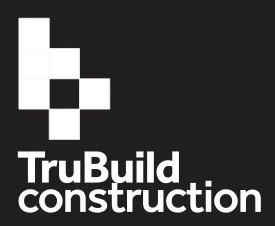

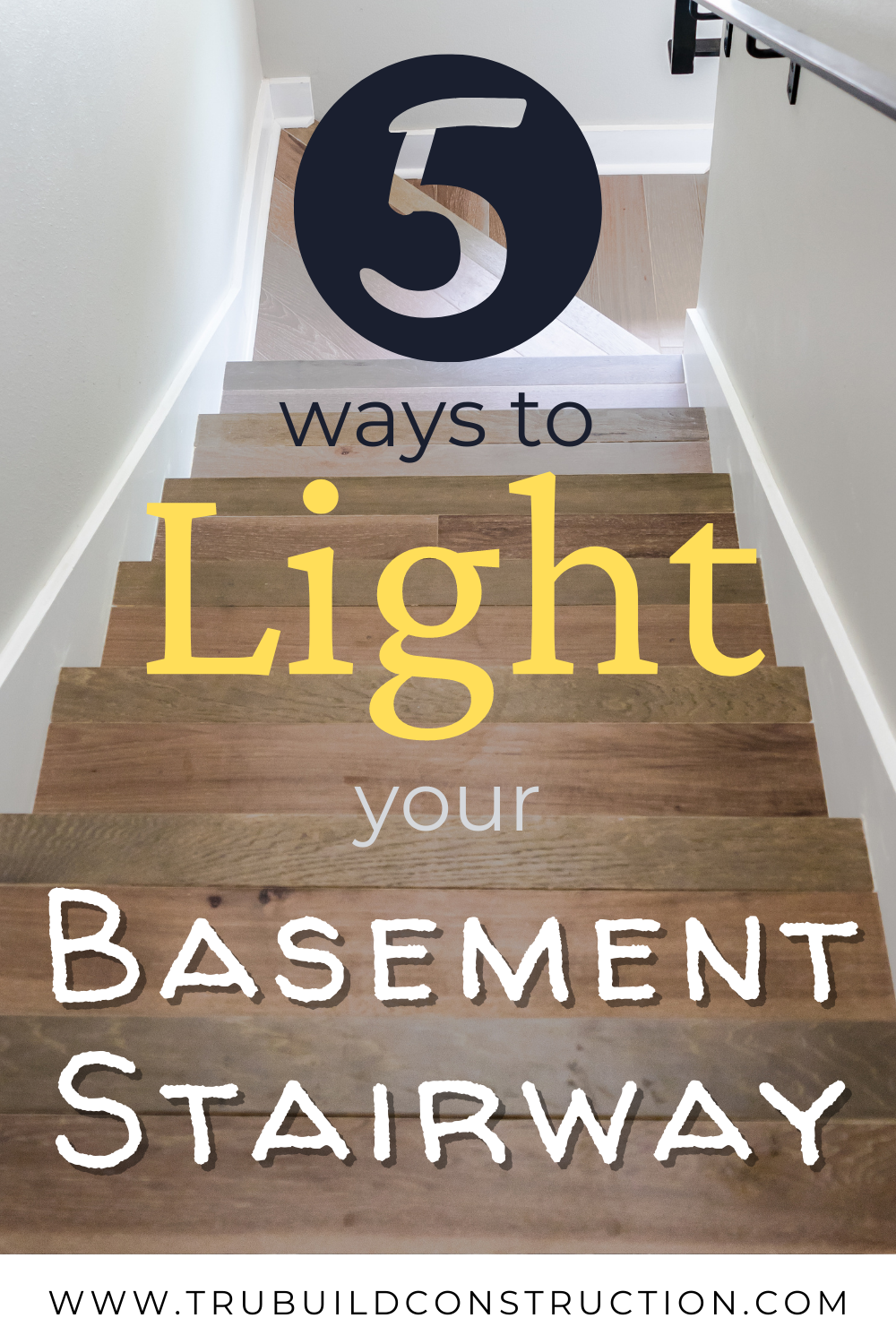





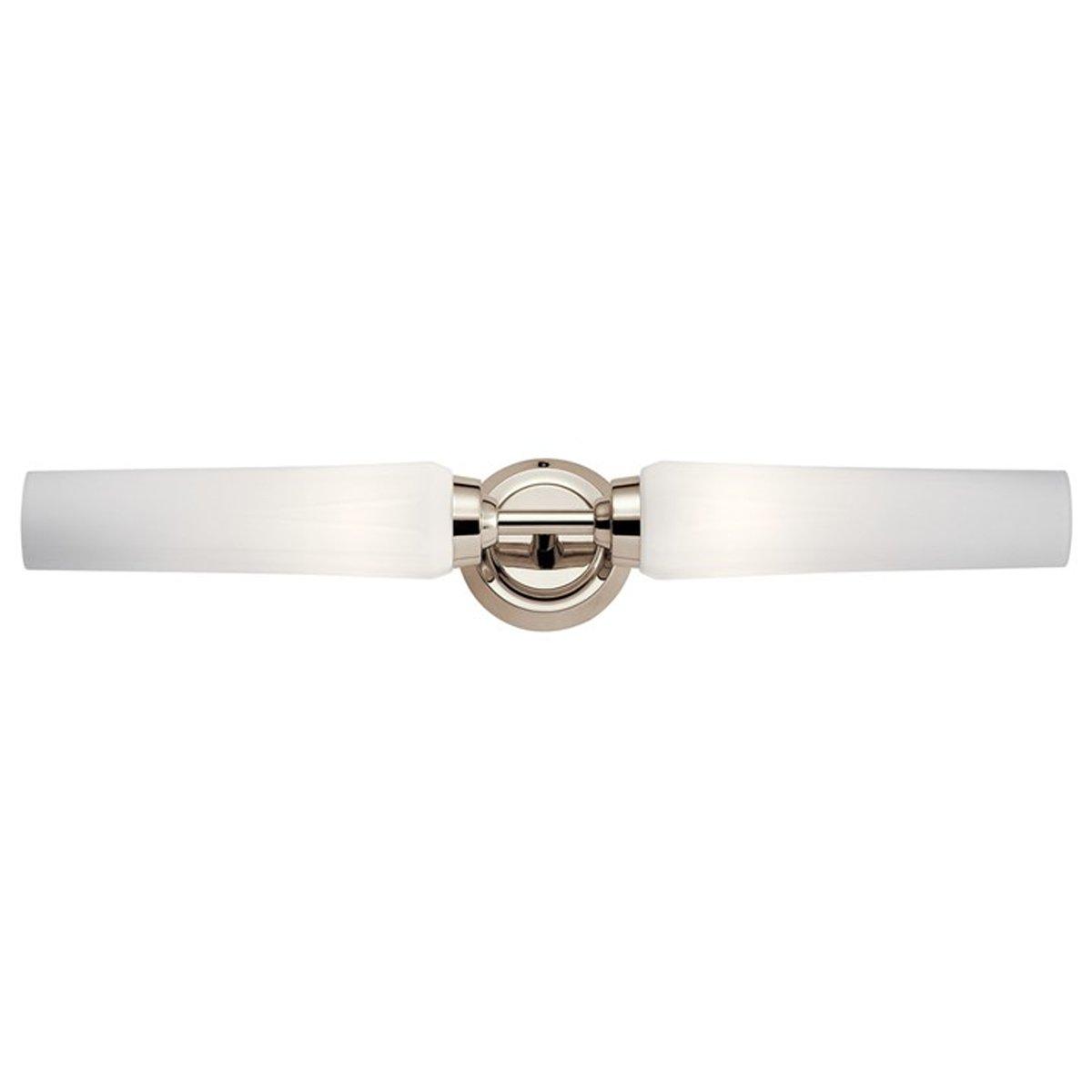
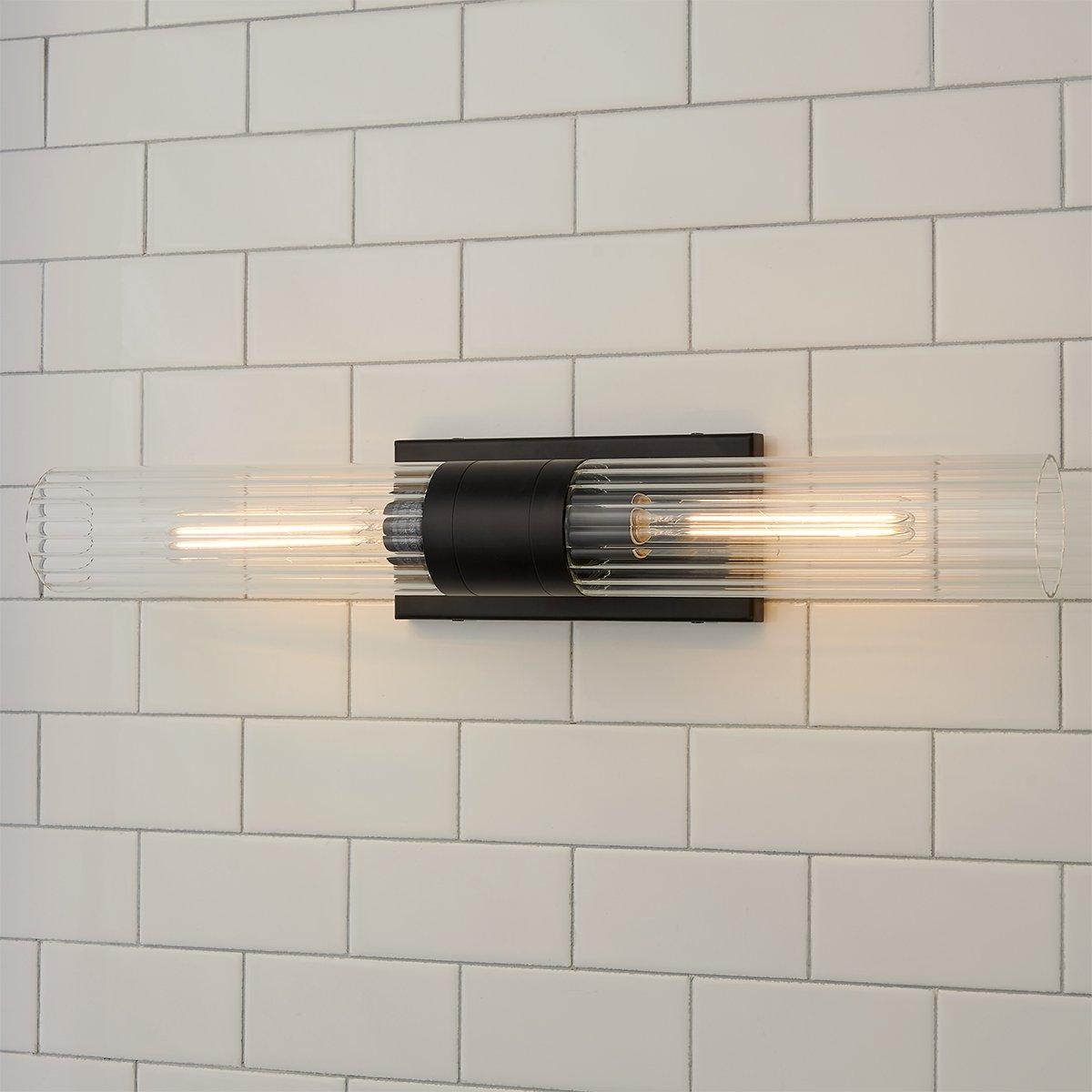
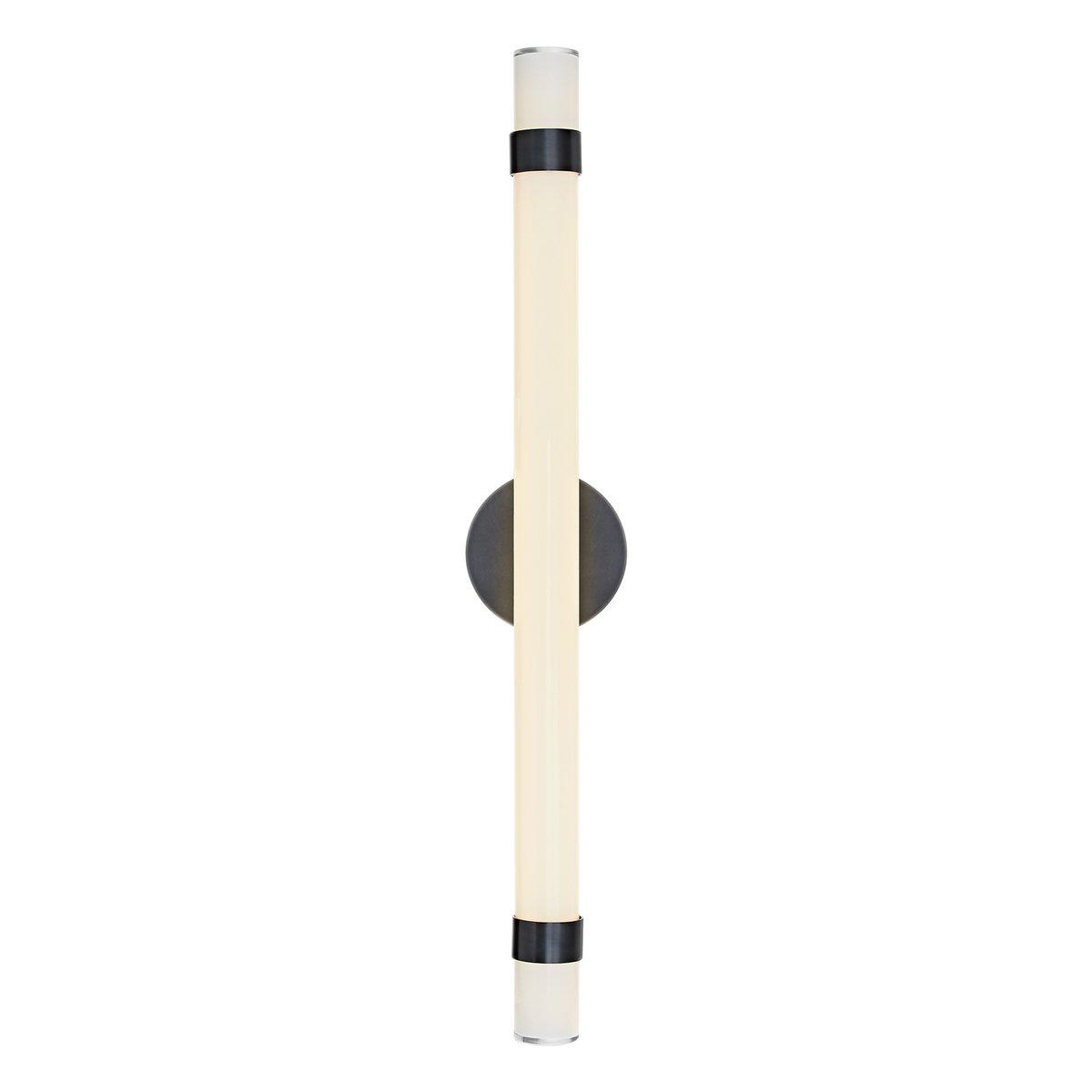
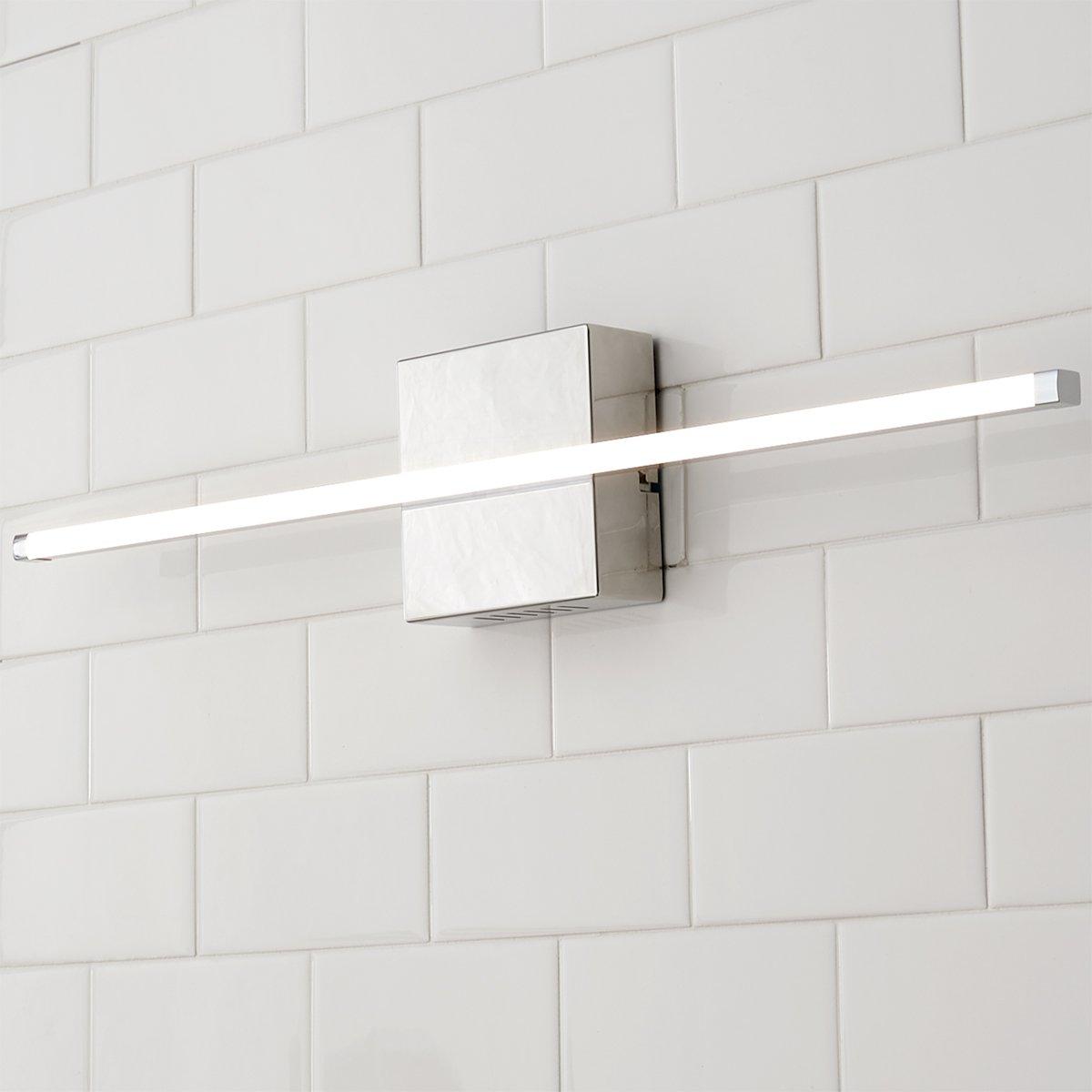
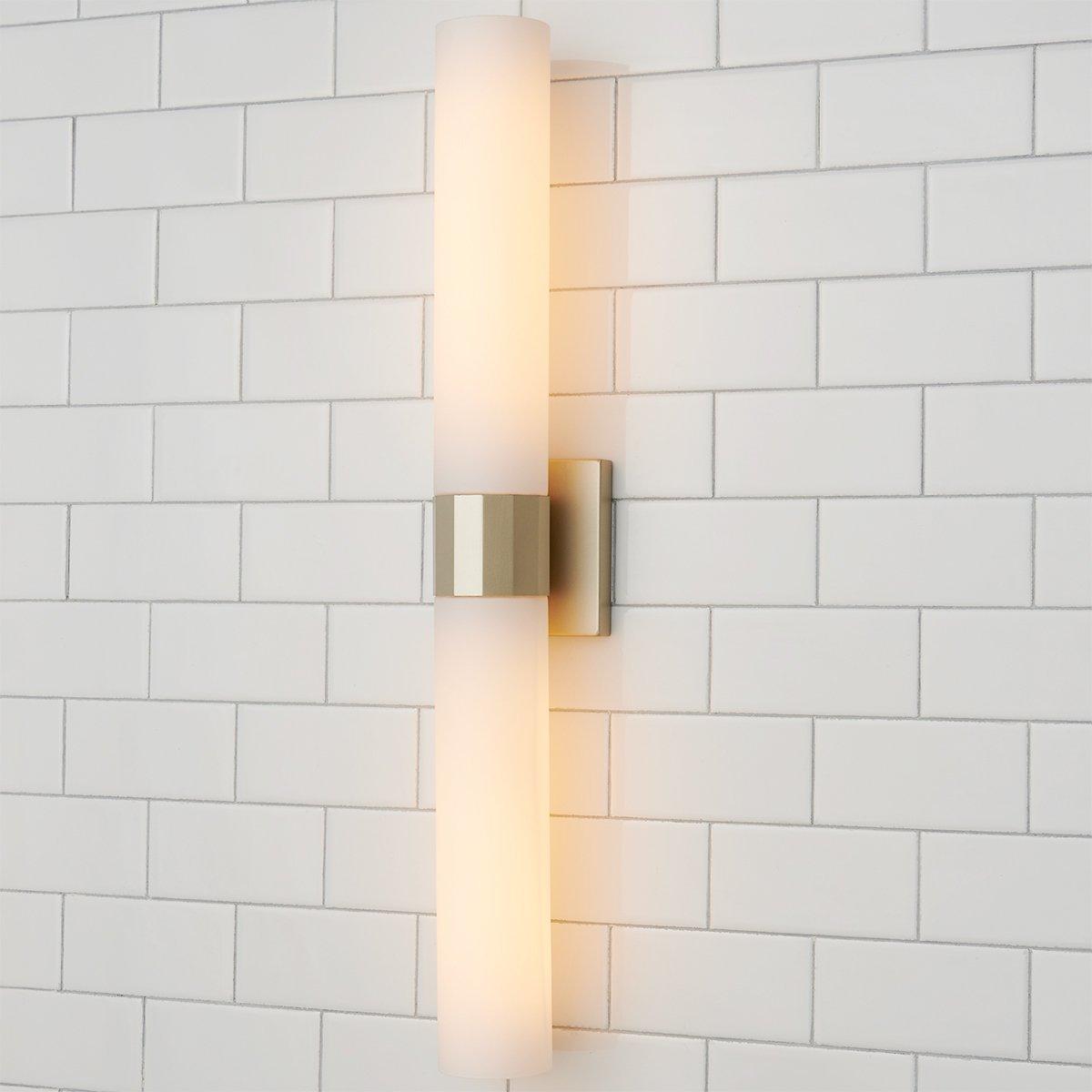




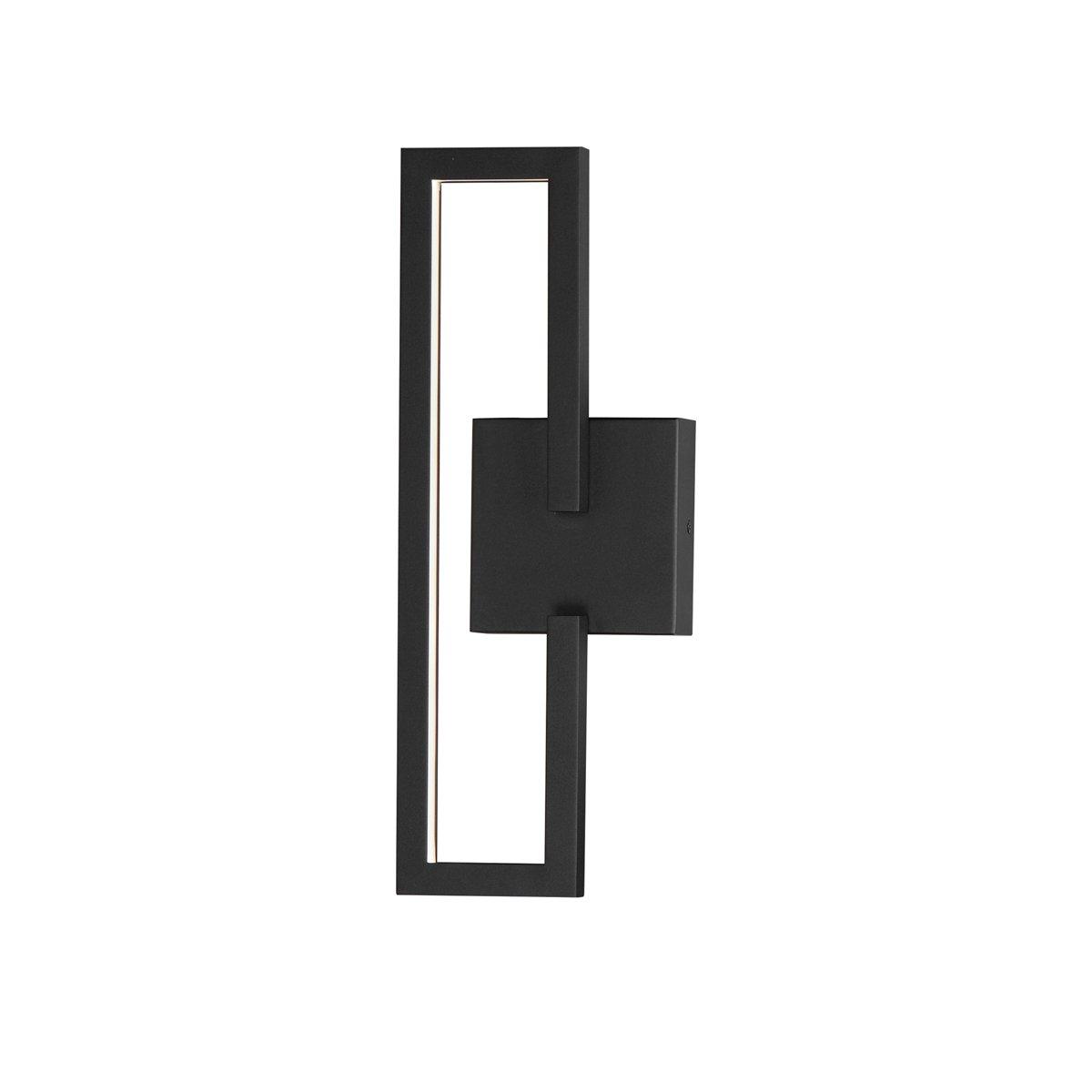
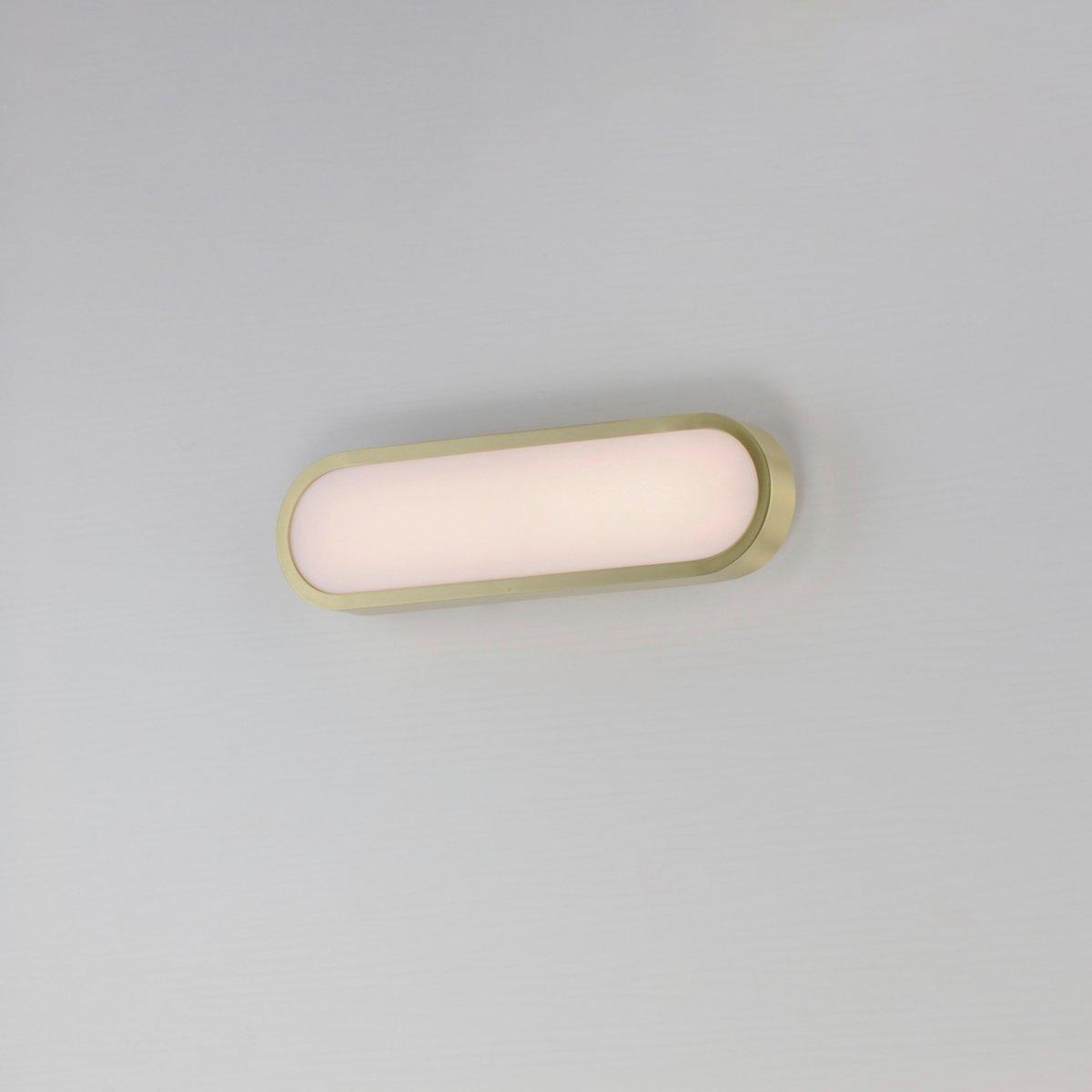
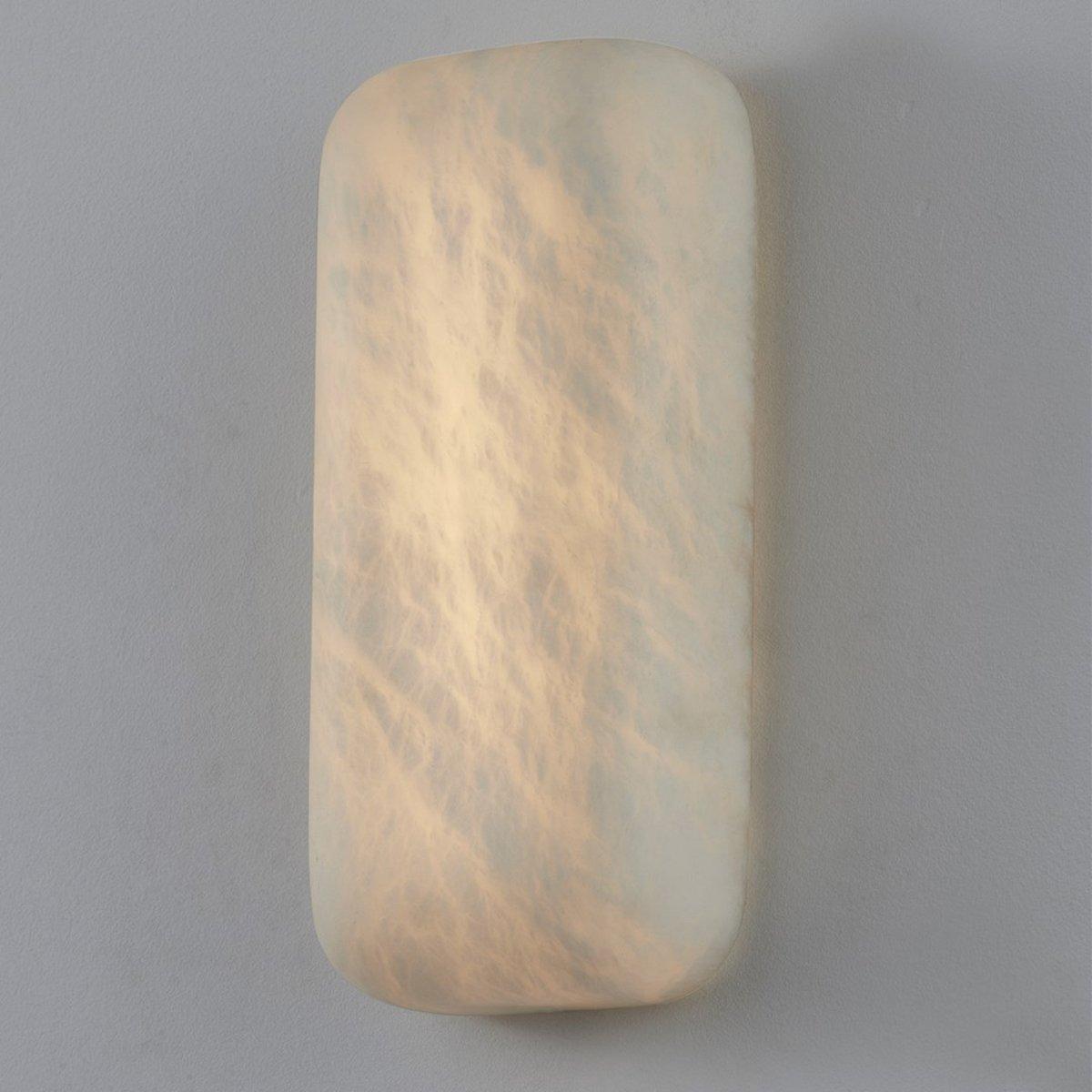
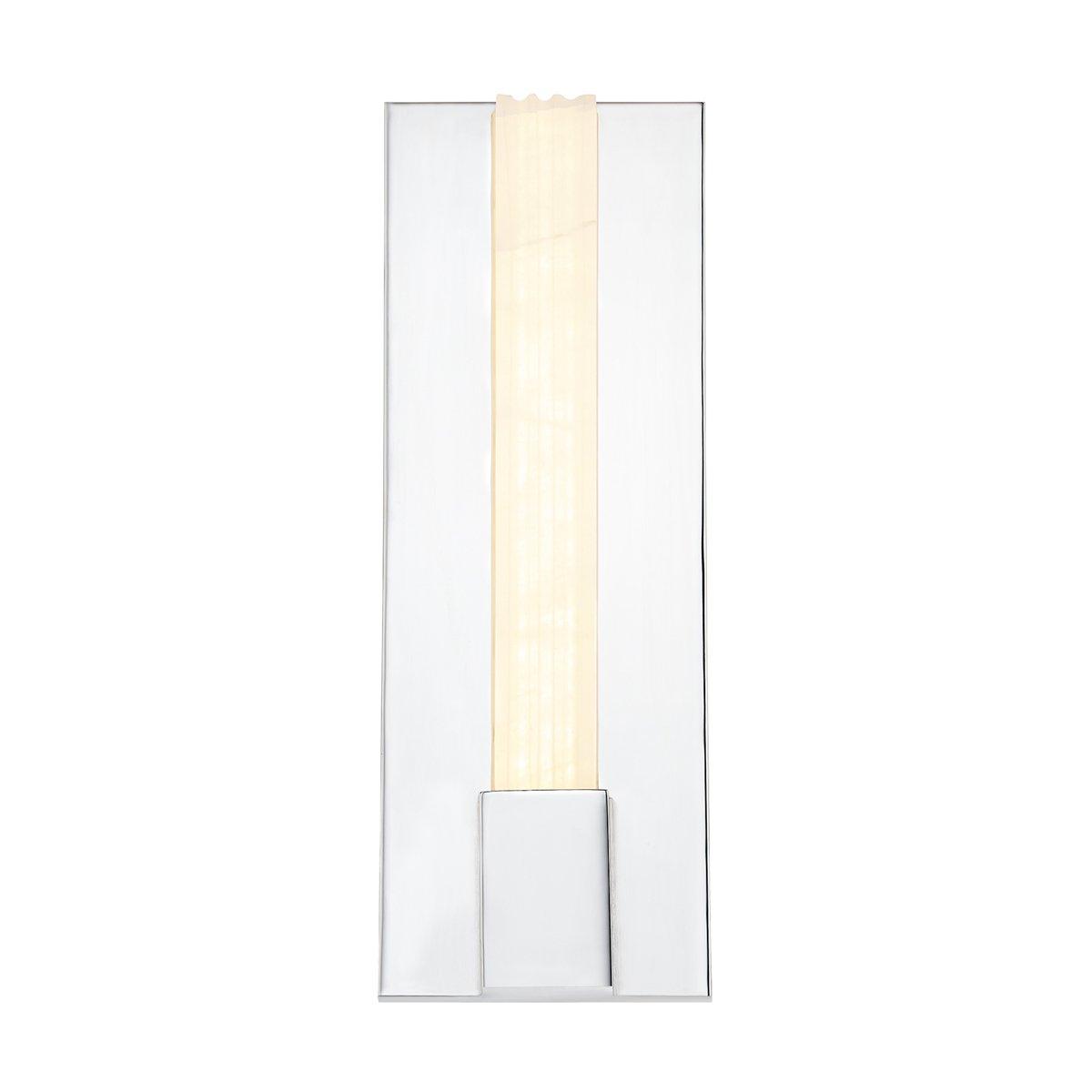
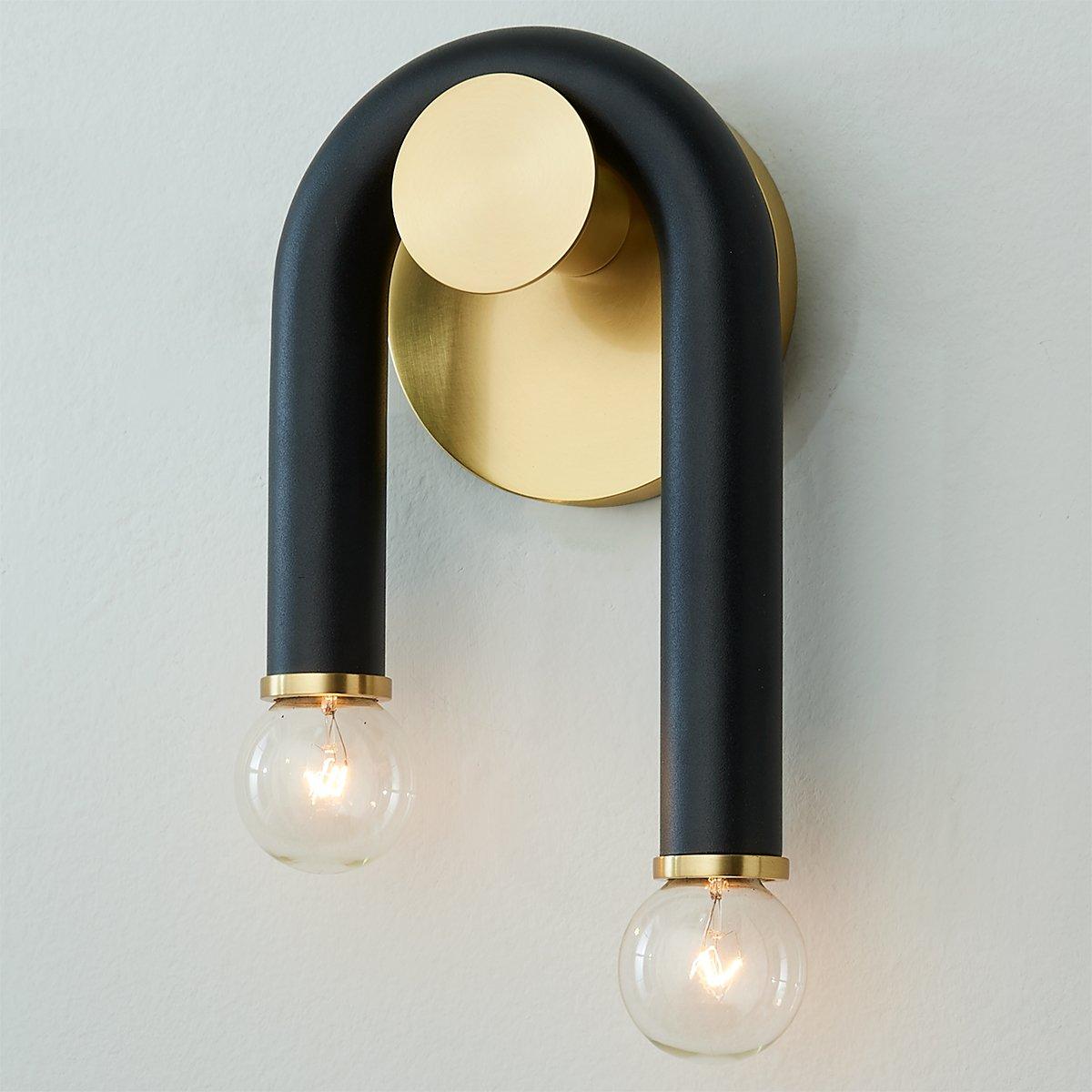
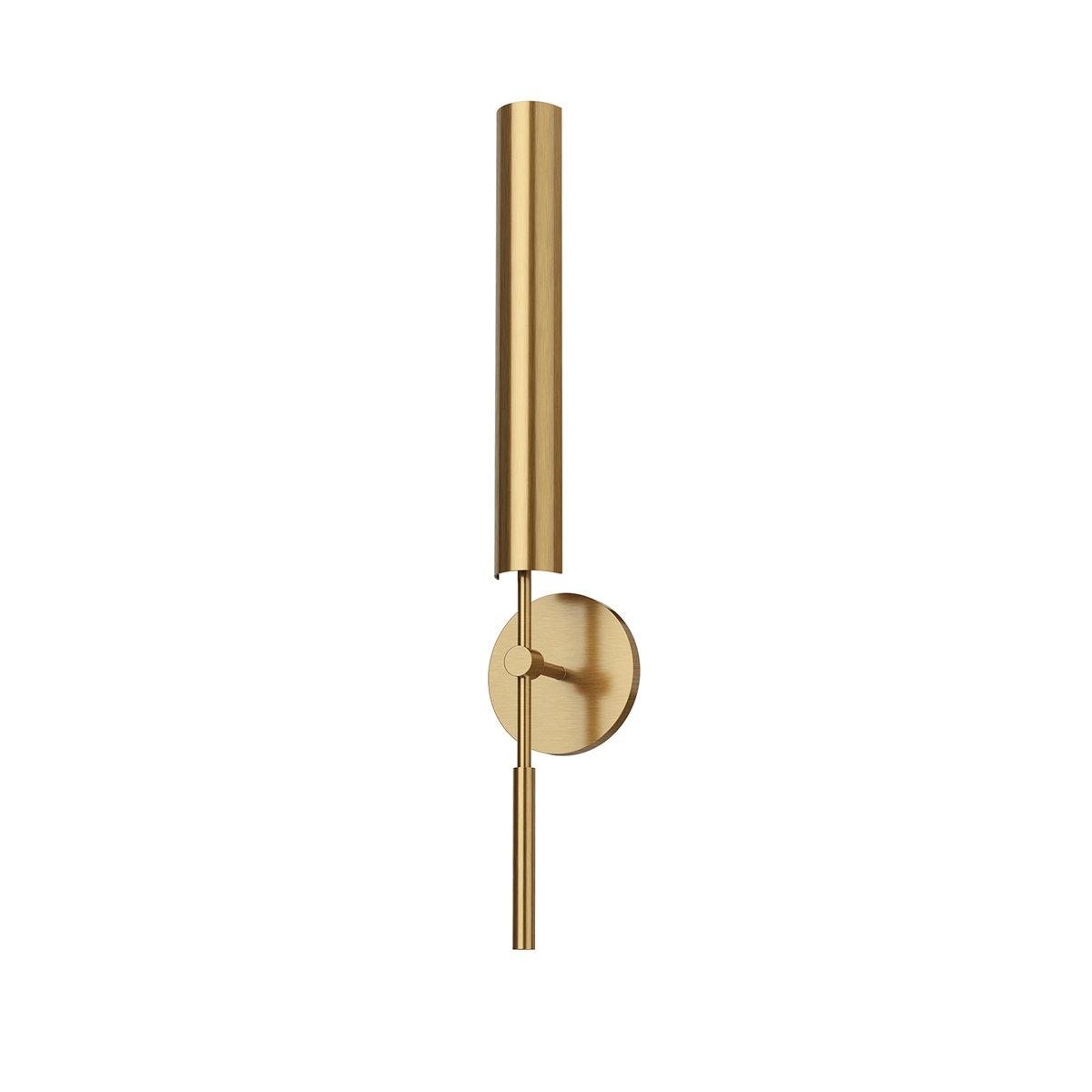
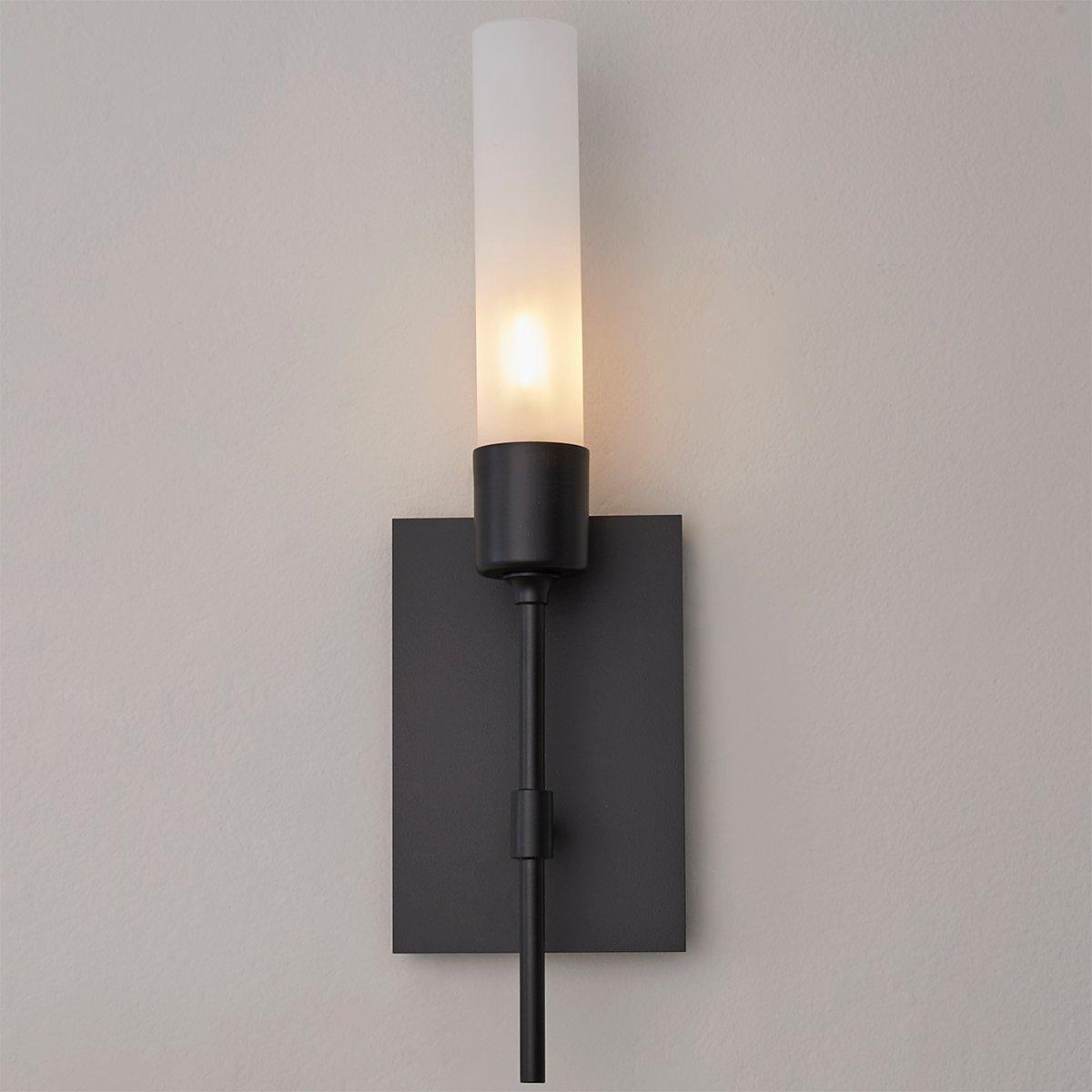
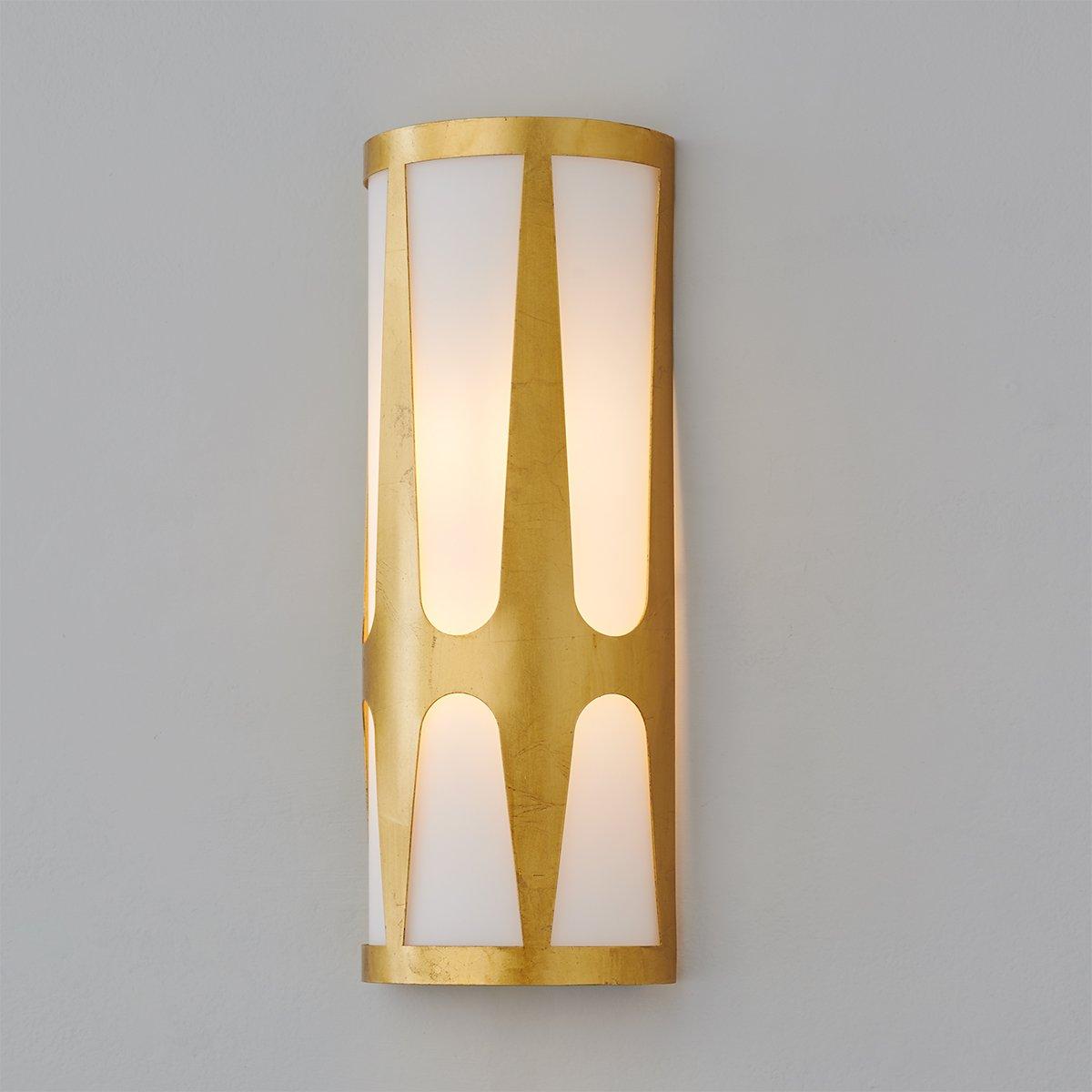
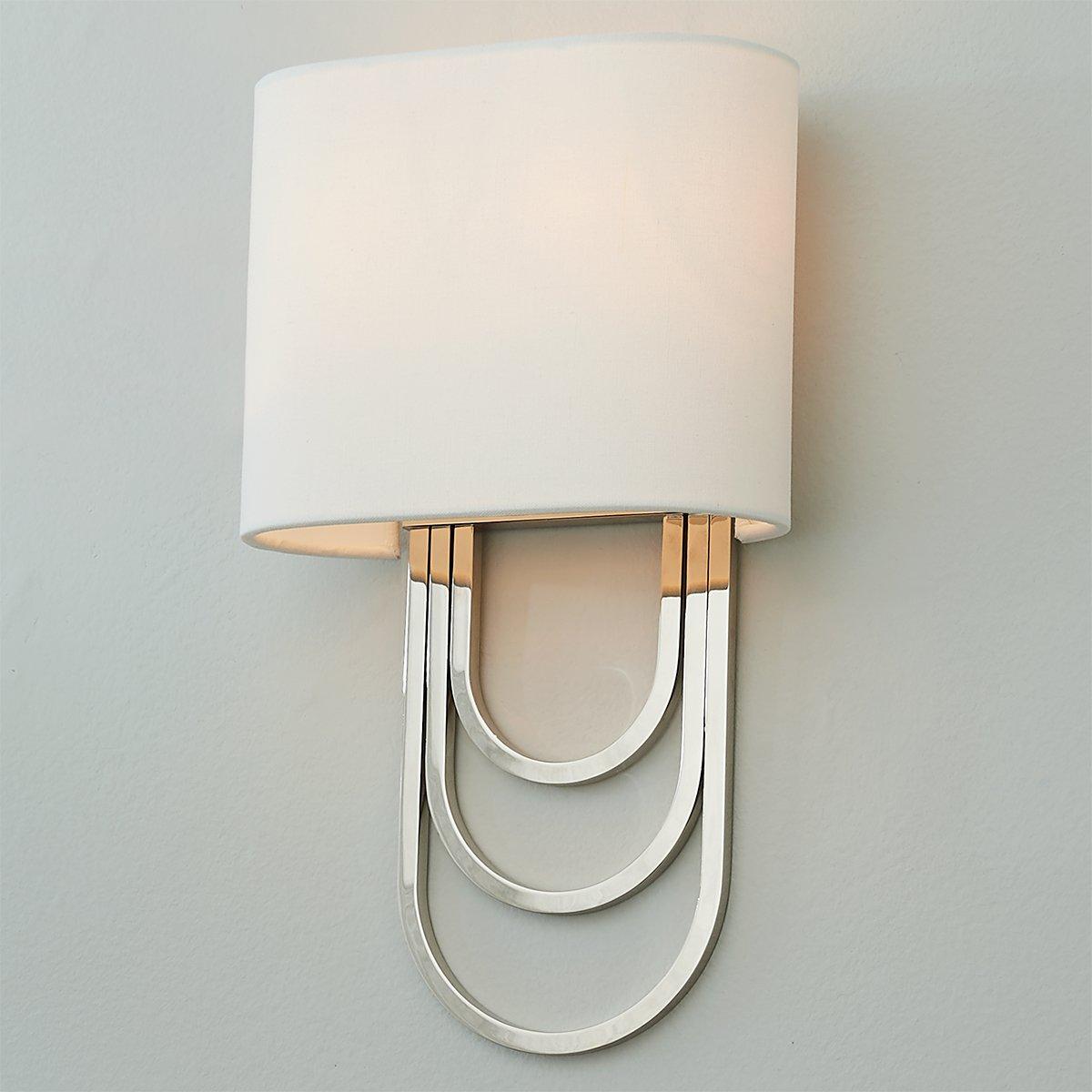

























![13 inch Flush Mount Ceiling Light, 3000K/4000K/5000K CCT, 20W [180W Equiv.] 1365LM CRI90, Surface Mount LED Light Fixture with Brushed Nickel for Kitchen Bathroom Bedroom, ETL Listed - 2 Pack](https://m.media-amazon.com/images/I/41mNryOjK-L._SL500_.jpg)


